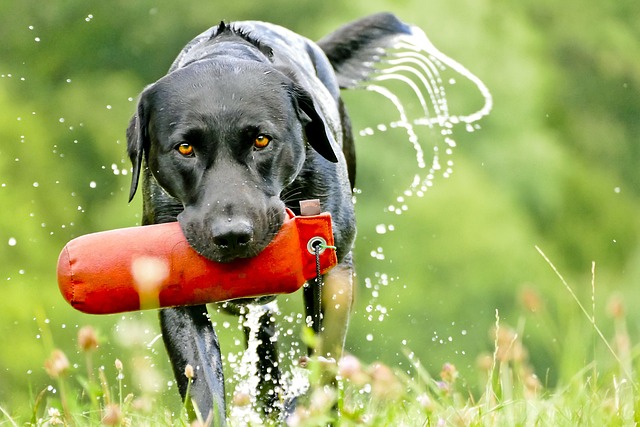After spending over a decade working with frustrated American dog owners, I've noticed a troubling pattern. Most people approach how to train a dog at home with outdated advice that often makes behavior problems worse, not better. The reality? Much of what we've been told about effective home dog training techniques flies in the face of modern canine behavioral science.
Here's what really gets me fired up: countless loving pet owners are unknowingly sabotaging their training efforts by following myths that sound logical but simply don't work. Actually, some of these approaches can damage the very bond they're trying to strengthen with their furry family members.
The dominance theory might be the most damaging myth I encounter. You know the advice – be the "alpha," assert your dominance, show your dog who's boss. This approach stems from misinterpreted wolf studies from the 1940s that have since been thoroughly debunked. Modern research reveals that dogs don't see us as pack leaders competing for status. Instead, they view us as partners in their daily survival and social needs.
When owners try to "dominate" their dogs through techniques like alpha rolls or harsh corrections, they're often creating anxiety and fear rather than respect. I've seen countless cases where this approach backfires spectifically. Take Sarah, a client whose German Shepherd became increasingly aggressive during walks. She'd been yanking his leash and using stern verbal corrections, believing she needed to show dominance. The result? Her dog associated walks with stress and began redirecting that anxiety toward other dogs.
Another persistent myth involves punishment-based training. Many American pet owners still believe that timing a correction perfectly will teach their dog what not to do. The science tells a different story. Punishment might temporarily suppress unwanted behavior, but it doesn't teach your dog what you actually want them to do instead.
Here's where things get interesting – and counterintuitive. The most effective home dog training techniques often involve doing the opposite of what feels natural to us humans.
Instead of correcting unwanted behavior, try ignoring it completely while dramatically rewarding the behavior you want. This approach, called differential reinforcement, works because dogs repeat actions that bring them attention and positive outcomes. When my neighbor's Golden Retriever kept jumping on guests, we stopped pushing him down or saying "no." Instead, we turned our backs and ignored him entirely when he jumped, but showered him with attention and treats the moment all four paws touched the ground.
The transformation happened within a week. The jumping behavior virtually disappeared because it no longer served his attention-seeking purpose.
Timing represents another area where scientifically backed dog training methods challenge conventional wisdom. Most people think they need to catch their dog in the act to effectively train them. Actually, the most powerful training happens when you reward your dog for naturally exhibiting good behavior throughout the day, not just during formal training sessions.
I call this "lifestyle training." When your dog chooses to lie calmly on their bed instead of begging at the dinner table, that's the perfect moment for a quiet "good choice" and a small treat. These micro-training moments accumulate into lasting behavioral changes because they're happening in real-life contexts.
Let me walk you through a practical example that demonstrates these counterintuitive principles in action. Teaching your dog to come when called – probably the most important command for safety – requires a complete mindset shift.
Traditional advice suggests calling your dog sternly and correcting them if they don't respond immediately. This creates a negative association with their name and the recall command. Instead, start indoors where distractions are minimal. Say your dog's name in a happy, excited voice. The moment they look at you – not when they come to you, just when they look – mark that moment with "yes!" and give them something amazing.
Repeat this process dozens of times over several days until your dog's head snaps toward you every time they hear their name. Only then do you start asking them to actually move toward you. The secret lies in building an incredibly strong positive association with responding to their name before adding the complexity of movement.
For loose leash walking, another common frustration, the counterintuitive approach involves rewarding your dog for being in the right position rather than correcting them for pulling. Every few steps, when your dog happens to be walking nicely beside you, drop a treat right next to your leg without saying anything. Your dog will start choosing to walk in that "treat zone" because good things happen there.
House training benefits enormously from this reward-focused mindset too. Instead of scolding accidents, become obsessed with catching your dog eliminating in the right spot. The moment they finish going outside, throw a party. Use your most excited voice, give multiple treats, play their favorite game. Make outdoor elimination the highlight of their day.
What amazes me most about these approaches is how they transform the relationship between dog and owner. When you shift from being a disciplinarian to being your dog's biggest cheerleader for good choices, something magical happens. The training becomes collaborative rather than adversarial.
Dogs trained with these positive, scientifically backed methods show increased confidence, better problem-solving abilities, and stronger bonds with their families. They're not walking on eggshells, worried about making mistakes. Instead, they're actively looking for ways to earn your approval and attention through good behavior.
This enhanced relationship extends beyond training sessions. Dogs who experience consistent positive reinforcement become more resilient to stress, more adaptable to new situations, and generally happier family members. They trust that their humans will help them succeed rather than trap them into making mistakes.
The beauty of learning how to train a dog at home using these methods is that every family member can participate successfully. Children can practice the reward-based techniques safely, elderly family members don't need to physically manage or correct the dog, and even visitors can contribute to the training process by following simple guidelines.
Starting your journey into effective home dog training techniques doesn't require expensive equipment or perfect timing. It requires a willingness to challenge what you think you know about dogs and embrace approaches that might feel unusual at first.
Remember, your dog isn't trying to dominate you or deliberately misbehave. They're simply trying to navigate a human world using the information you provide through your responses to their behavior. When you become incredibly generous with rewards for good choices and boring for poor choices, you're giving your dog clear, positive information about how to succeed in your household.
The most successful dog owners I work with share one common trait: they've learned to see training opportunities in everyday moments rather than restricting learning to formal sessions. Your dog is always learning from your responses. The question isn't whether you're training your dog – you are, whether you realize it or not. The question is whether you're teaching them what you actually want them to know.




